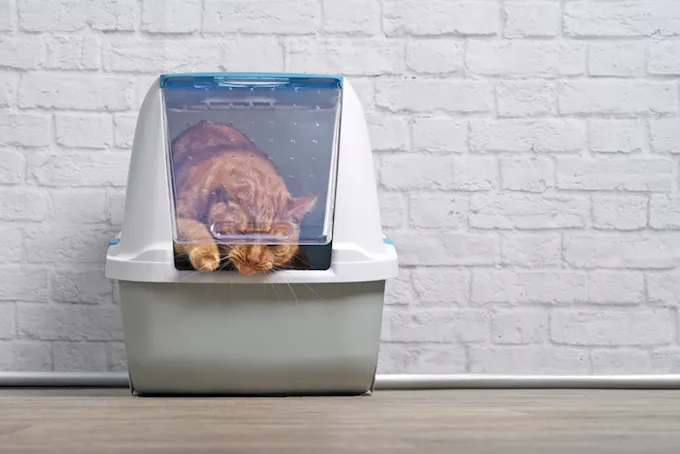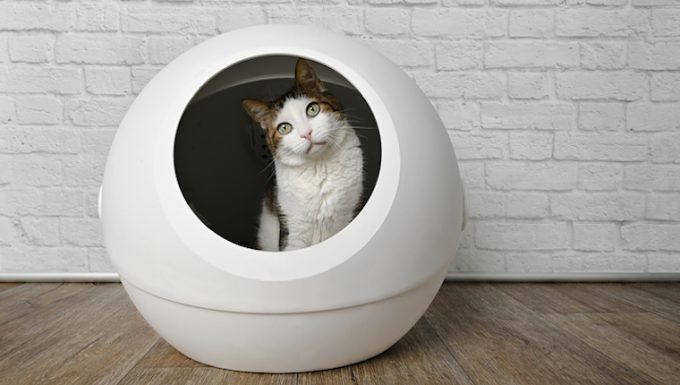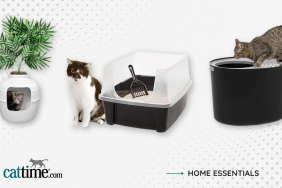Hematochezia in cats happens when there is blood in a cat’s poop. The condition is often linked to an underlying cause and sometimes involves diet problems.
Generally, the condition causes inflammation issues with a cat’s rectum.
Note that the condition is different to dyschezia in cats. That condition involves a cat struggling to poop. You can read more about it here.
If you see the signs of hematochezia in your cat, then get to a veterinarian for a proper diagnosis and treatment.
Here’s what you should know about the symptoms, causes, and treatments for the condition.
Symptoms of Hematochezia in Cats
The condition produces a range of symptoms, although the main one is blood in the poop. For example, some of the most common other symptoms include:
- Not being able to poop
- Vocalizing while pooping
- Straining while trying to poop
- Vomiting
- Loss of appetite
- Diarrhea
- Lumpy parts around the rectum
- Very hard poop
Causes of Hematochezia in Cats

The cause of the condition can be one of a number of things. For instance, some of the common causes include:
- Eating a lot of human food
- Parasites
- Inflammatory bowel disease
- Stress
- Constipation
- Change of diet
- Panleukopenia
- Trauma
Additionally, some cases of the condition are idiopathic. This means that the cause is unknown.
Treatments for Hematochezia in Cats
Firstly, your vet will ask about your cat’s symptoms. Secondly, your vet will ask about your cat’s full medical history. Thirdly, your vet will want to know about any changes of diet.
Next, a full physical examination will be carried out. This will include blood and urine tests. Additionally, in many cases a stool sample will be analyzed. This is to look for parasites.
In some cases, ultrasounds and X-rays are also used to confirm the condition.
Treatment is based on the underlying condition. For example, an infection will require medication. As always, if your vet prescribes your cat any medicine, make sure to stick to the correct dose and frequency instructions. Also, complete the full course of medicine.
Alternatively, if your cat’s diet is an issue, your vet will recommend changing it. Always listen to your vet’s advice before drastically changing your cat’s diet.
Generally, recovery rates for this condition are good. Although it’s important to keep up regular vet appointments to monitor your cat’s health and progress.
Have you ever cared for a cat who suffered from this condition? How did your vet help your cat recover? Let us know in the comments section below.









